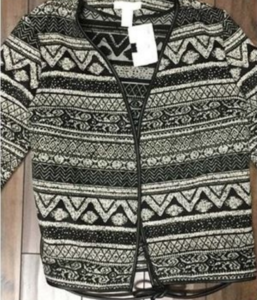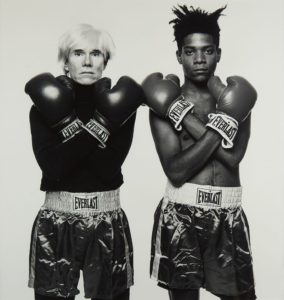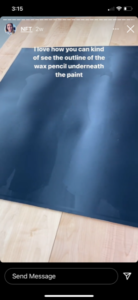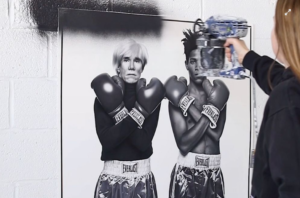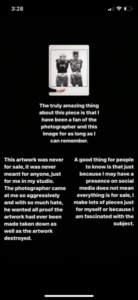Andy Warhol’s Prince Series and Issues of Transformativeness in Visual Works
By Brady Hagan on December 15, 2022
Author: Brady Hagan
The Supreme Court will soon decide a case that, according to the appellants, could cause “a sea-change in the law of copyright” and cast “a cloud of legal uncertainty over an entire genre of visual art.” Indeed, the Court is expected soon to decide Andy Warhol Foundation for the Visual Arts, Inc. v. Goldsmith, a case expected (and hoped by some) to refine the meaning of “transformative use,” a part of fair use analysis, as applied to visual works in copyright infringement lawsuits, an issue on which the Second and Ninth Circuits have split. The key issue in Goldsmith is whether a work of visual art was sufficiently transformative of a photograph it was based on to constitute fair use.
In 1981, photographer Lynn Goldsmith took a photograph of acclaimed pop artist Prince in her studio (the “Photo”). Later, in 1984, Goldsmith licensed the Photo to Vanity Fair for use as an artistic reference.1 Unbeknownst to her, the artist hired by Vanity Fair was pop-art artist Andy Warhol. Vanity Fair’s license allowed it to publish an illustration of the Photo, once as a full page and once again as a quarter page, with co-attribution to Goldsmith. Vanity Fair’s use of the Photograph was thus authorized by Goldsmith, the copyright holder. However, Warhol would independently, and without license from Goldsmith, use the Photo as the subject matter of his Prince Series, rendering the image sixteen times in his characteristic style of sharp, contrasting colors and deep shading, typified by his works like Marilyn Diptych (1962) and Campbell’s Soup Can (1962). The most famous of the Prince Series is a work called Orange Prince, contrasted with the original photo below:

The Prince Series remained part of Warhol’s private collection until he passed away in 1987, at which point much of his life’s work was transferred to The Andy Warhol Foundation for the Visual Arts, Inc. (“the Warhol Foundation”), a non-profit whose mission is “the advancement of the visual arts.” In furtherance of its purpose, the Warhol Foundation donated the Prince Series for exhibition many times to such museum venues as the Museum of Modern Art, Tate, and The Andy Warhol Museum.
Goldsmith finally learned of the Prince Series after Prince’s death in 2016, when publisher Condé Nast (owner of Vanity Fair), published a commemorative edition magazine reflecting on the star’s life, and in which it used a print from Warhol’s Series, crediting the Warhol Foundation while failing to credit Goldsmith. Goldsmith notified the Warhol Foundation that she regarded it as being in violation of her copyright. The Warhol Foundation responded by suing Goldsmith in the United States District Court for the Southern District of New York, seeking declaratory judgment that the Prince Series works did not infringe Goldsmith’s exclusive rights in violation of the U.S. Copyright Act. Goldsmith countersued for declaratory judgment that the Prince Series did infringe her exclusive rights.
After reviewing the parties’ cross-motions for summary judgment, the District Court granted summary judgment to the Warhol Foundation and against Goldsmith, finding the Warhol prints constituted fair use of the original Photo, notwithstanding Warhol’s lack of license or permission for the use. In doing so, it relied on the general principle articulated by the Supreme Court in Campbell v. Acuff-Rose Music, Inc. that a work is transformative if it “adds something new, with a further purpose or different character, altering the first with new expression, meaning, or message.” 471 U.S. 539, 579 (1985). Perhaps most central to its holding, the District Court observed:
These alterations result in an aesthetic and character different from the original. The Prince Series works can reasonably be perceived to have transformed Prince from a vulnerable, uncomfortable person to an iconic, larger-than-life figure. The humanity Prince embodies in Goldsmith’s photograph is gone. Moreover, each Prince Series work is immediately recognizable as a “Warhol” rather than as a photograph of Prince – in the same way that Warhol’s famous representations of Marilyn Monroe and Mao are recognizable as “Warhols,” not as realistic photographs of those persons.
Id. at 326. Accordingly, it held Warhol’s use was sufficiently transformative to support a finding of fair use as a matter of law.
Goldsmith appealed to the Second Circuit, which reversed the District Court. 11 F.4th 26 (2d. Cir. 2021). The main target of the Second Circuit’s reversal was the trial court’s holding that Warhol’s works were sufficiently transformative. “[A]s we have previously observed, an overly liberal standard of transformativeness, such as that employed by the district court in this case, risks crowding out statutory protections for derivative works.” Id. at 39. While it endorsed the District Court’s articulation of the general rule above from Campbell (a rule applied in the context of musical works of parody), the Second Circuit took a stricter view of transformativeness in this case, finding Warhol’s work retained and exploited too substantial a quantity and quality of the original photo’s features to constitute fair use such that it infringed Goldsmith’s copyright. The Warhol Foundation appealed to the Supreme Court, which granted certiorari. The United States Copyright Office filed an amicus brief in support of affirming the Second Circuit.
Until the Supreme Court renders a decision, we might make two observations. First, the primary disagreement between the Second Circuit and the District Court below fundamentally pertained to “how much” a creator can borrow from another’s original work, both in terms of quantity and quality, before it would no longer qualify as fair use, and also how much weight should be accorded to a purportedly new “meaning or message” in the derivative work. The Second Circuit essentially found the Prince Series used too much of the original Photo, notwithstanding the significant changes the District Court correctly identified as Warhol’s artistic contributions. It also found that the District Court overemphasized the new meaning or message, one of cultural commentary, that Warhol’s paintings add to the original image.
Second, “there is some inherent tension in the Copyright Act between derivative works, reserved to the copyright holder, which are defined in part as works that ‘recast[ ], transform[ ], or adapt[ ]’ an original work, and ‘transformative’ fair uses of the copyrighted work by others.” Id. at 39. In this author’s view, that tension is theoretically near its peak in visual art, simply given the nature of visual works as often fixed and defined images, not easily borrowed without clear duplication of the original’s inherent elements. Thus, it may be harder for a user of another’s photograph to prove fair use as compared to other artistic mediums, because such appropriation tends to require the direct duplication of fixed, identifiable elements of an image.
Along the same lines, the author might further observe that if the Second Circuit is affirmed, photographers rejoice, because it would become just that much harder for infringement defendants to prove fair use, even in cases of partial or elemental use of original photographs. Further, affirming the Second Circuit would (in theory) give prospective users greater incentive to seek licenses and paid permission from original creators, again, especially photographers, rather than run a then higher risk of litigation and liability for infringement. On the other hand, reasonable commentators tend to speculate that an affirmance of the Second Circuit could chill artistic endeavors. But this raises further questions of the likelihood of enforcement in private, non-commercial contexts anyway, and it arguably downplays the fact that transformativeness is only part of a more holistic fair use analysis. Transformativeness remains only a sub-factor of one of the four fair use factors.
Regardless of the outcome, we will wait eagerly to see whether the Prince prints are indeed transformative, or Warhol’s work infringes.
About the author: Brady Hagan is an associate at Gordon Rees Scully Mansukhani and a member of the Firm’s Intellectual Property Practice Group. Before entering private practice, he clerked for Chief Justice John D. Minton, Jr. of the Supreme Court of Kentucky, and then for Senior U.S. District Judge William O. Bertelsman of the Eastern District of Kentucky. Through his judicial clerkships, Mr. Hagan handled a variety of matters and gained insight into the inner workings of both state and federal courts.
____________________________________________________________________________
1 As the term suggests, an “artistic reference” refers to a work or object upon which an artist bases his or her new work as an image reference.


